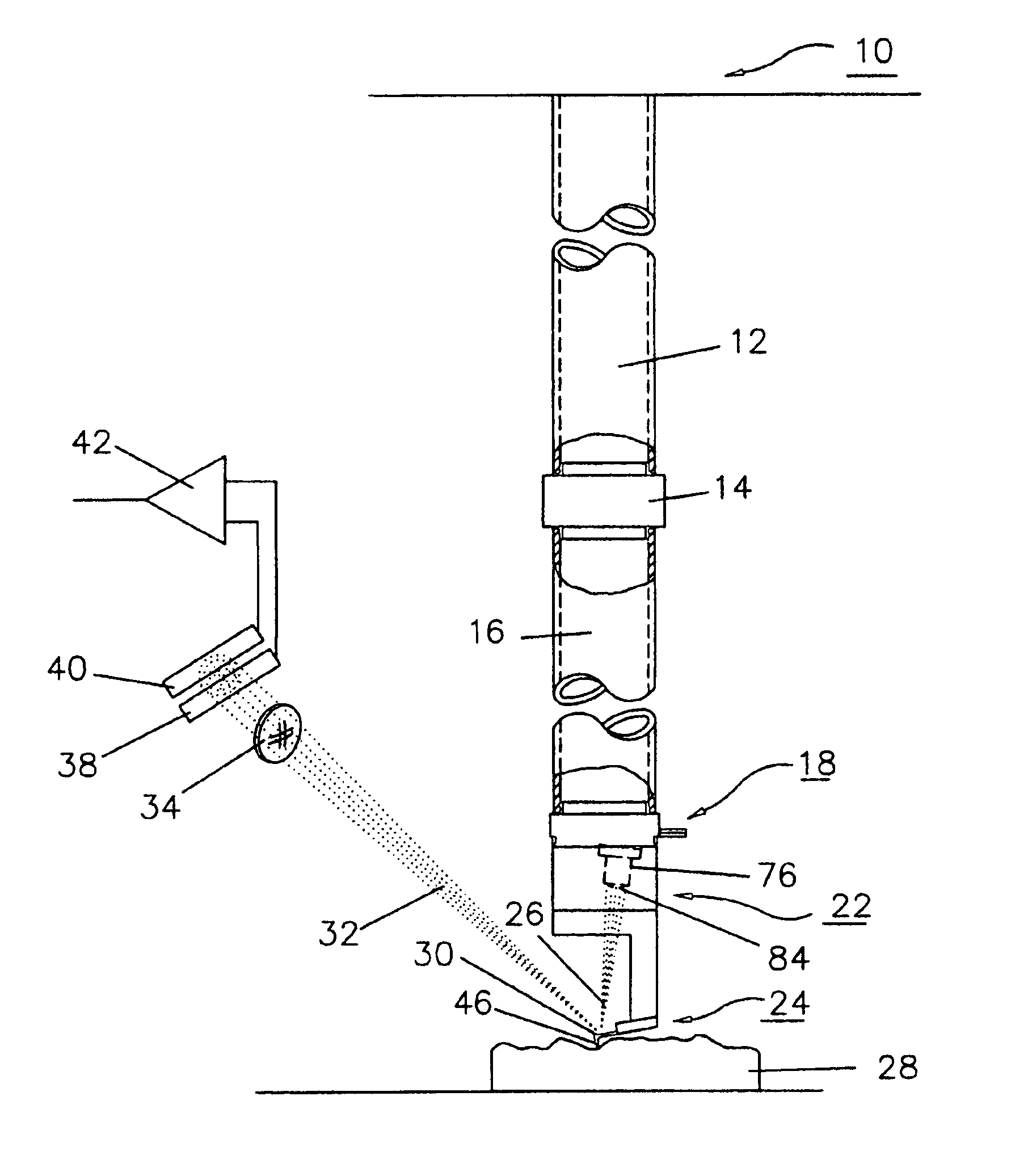Removable probe sensor assembly and scanning probe microscope
a scanning probe and sensor assembly technology, applied in the direction of instruments, mechanical measuring arrangements, mechanical roughness/irregularity measurements, etc., can solve the problems of stylus tip blunders, stylus or cantilever damage, etc., to prevent damage to the vertical and lateral drive mechanism
- Summary
- Abstract
- Description
- Claims
- Application Information
AI Technical Summary
Benefits of technology
Problems solved by technology
Method used
Image
Examples
Embodiment Construction
[0044]FIG. 1 illustrates a preferred embodiment of the invention. A microscope frame 10 supports a lateral driver 12 coupled to a vertical driver 16 by a coupler 14 . Vertical driver 16 supports a receiver assembly 18 . A removable probe illuminator assembly 22 supports a laser 76 with a laser focusing lens 84 and a probe assembly 24 detailed in FIG. 1A. Probe illuminator assembly 22 is shown in FIG. 2. Laser 76 creates a laser beam 26. Laser beam 26 reflects off a cantilever 30, which supports a stylus 46, to form a reflected beam 32. Stylus 46 follows the topography of a sample 28. Reflected beam 32 passes through a beam sizing lens 34 and impinges on a first photodiode 38 or a second photodiode 40 or both. A difference amplifier 42 receives the output signals from photodiodes 38 and 40. Beam sizing lens 34 is optional and either increases or decreases the diameter of the beam to a value that matches the light sensitive areas of photodiodes 38 and 40. The focal lengths and positio...
PUM
 Login to View More
Login to View More Abstract
Description
Claims
Application Information
 Login to View More
Login to View More - R&D
- Intellectual Property
- Life Sciences
- Materials
- Tech Scout
- Unparalleled Data Quality
- Higher Quality Content
- 60% Fewer Hallucinations
Browse by: Latest US Patents, China's latest patents, Technical Efficacy Thesaurus, Application Domain, Technology Topic, Popular Technical Reports.
© 2025 PatSnap. All rights reserved.Legal|Privacy policy|Modern Slavery Act Transparency Statement|Sitemap|About US| Contact US: help@patsnap.com



